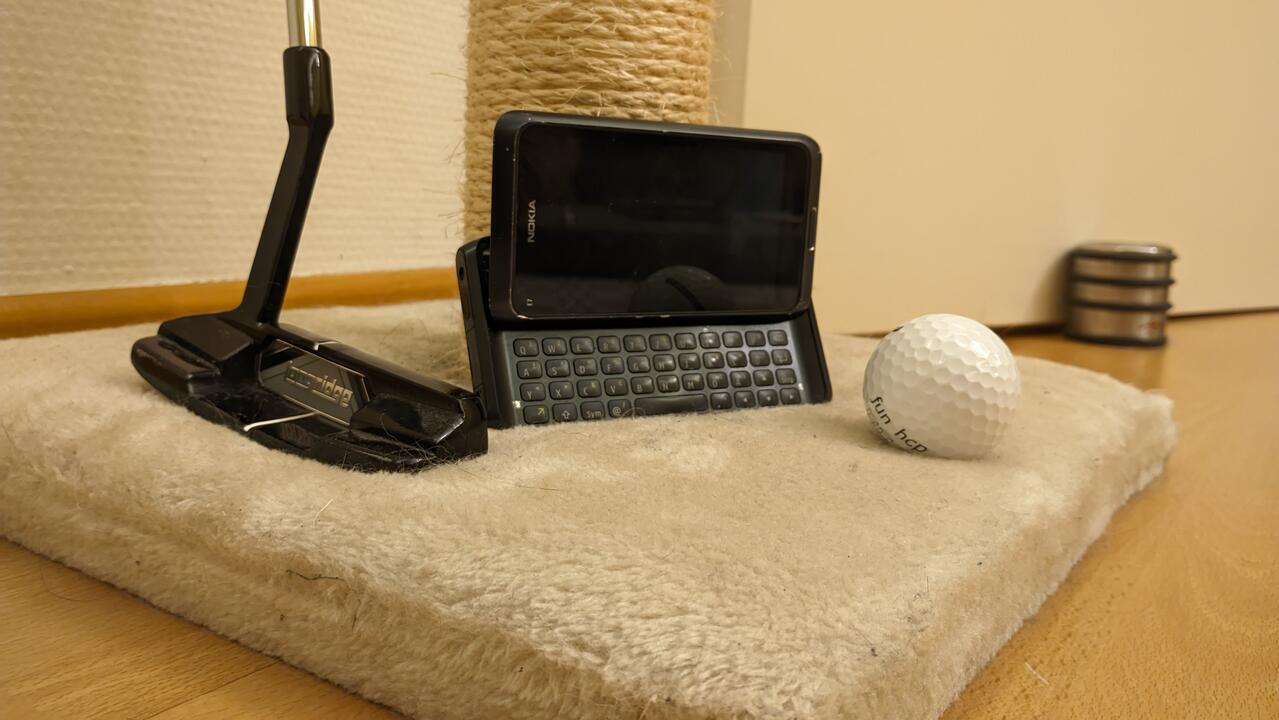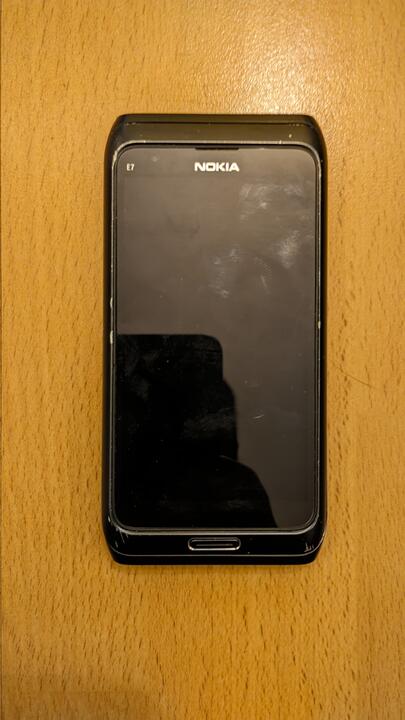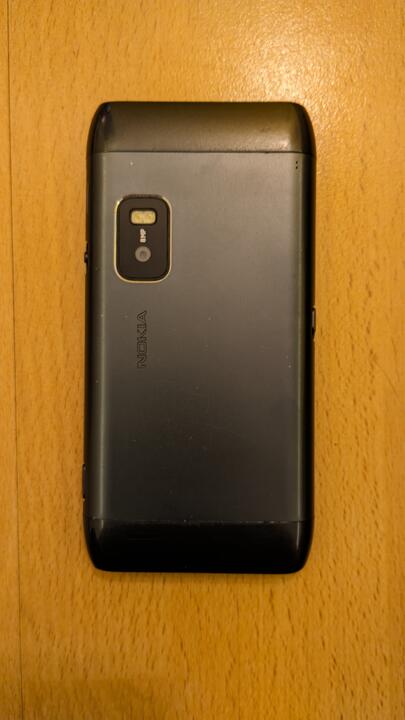Nokia E7
Status: 🔴 Critically damaged
Specs
- Launch date: 2011
- Software platform: Symbian^3, upgradable to Nokia Belle
- Display: 640 x 360 pixels, 4.0" AMOLED, 16M colors
- CPU and RAM: ARM 11 680 MHz, 256 MB RAM
- Connectivity: GSM, HSDPA, Wi-Fi 802.11 b/g/n, Bluetooth 3.0, microUSB (USB On-The-Go)
- Storage: 16 GB internal, no card slot
- Camera: 8 MP (rear), 720p video recording
- Third party apps: Symbian apps (Nokia Store)
- Internet: WAP 2.0/xHTML, HTML, RSS reader, Adobe Flash Lite
- Other notable features: Full slide-out QWERTY keyboard, HDMI output, Gorilla Glass, GPS with A-GPS
The Nokia E7 looked like something that had arrived from the future, but with a nod of respect to the past. Its aluminum body and solid heft inspired confidence, and the screen that slid up at an angle revealed a full-size QWERTY keyboard — a worthy salute to Nokia’s early-2000s communicators. This wasn’t just about style — it was a machine built for work, communication, writing, emails, notes, and documents. The E7 was a Symbian^3 flagship, later upgradable to Nokia Belle, and it confidently held its ground as a business device with multimedia leanings.

But as much as the E7 captivated with its engineering elegance, it had one fatal omission — the lack of a memory card slot. Back then, 16 GB of built-in storage looked decent on paper, but for someone using their phone heavily as both a media player and a portable computer, the limitation was tangible. That detail — small from a marketing standpoint — proved decisive when I stood in a flagship store comparing the E7 with another intriguing device: the Nokia X7. The latter had no physical keyboard, but it had style, it had a great screen, and it had a microSD slot.



In the end, I chose the X7 over the keyboard classic — not without regret, but with a sense of practicality. Still, the E7 will forever remain in my memory as the last great representative of the Symbian era, in which Nokia tried to achieve the impossible: to unite corporate productivity, multimedia, and style in a single body. And even though the market was already shifting toward Android and iOS, the E7 was a reminder of how smartphones could be made with soul.
🇺🇦 HELP US HELP OTHERS, SAVE ANIMALS IN UKRAINE
Site map | Powered by crew | © 2025 TiredSysadmin
All photos from Vintage Cellphone and PDA Museum by TiredSysadmin are licensed under Creative Commons Attribution-NonCommercial-ShareAlike 4.0 International.